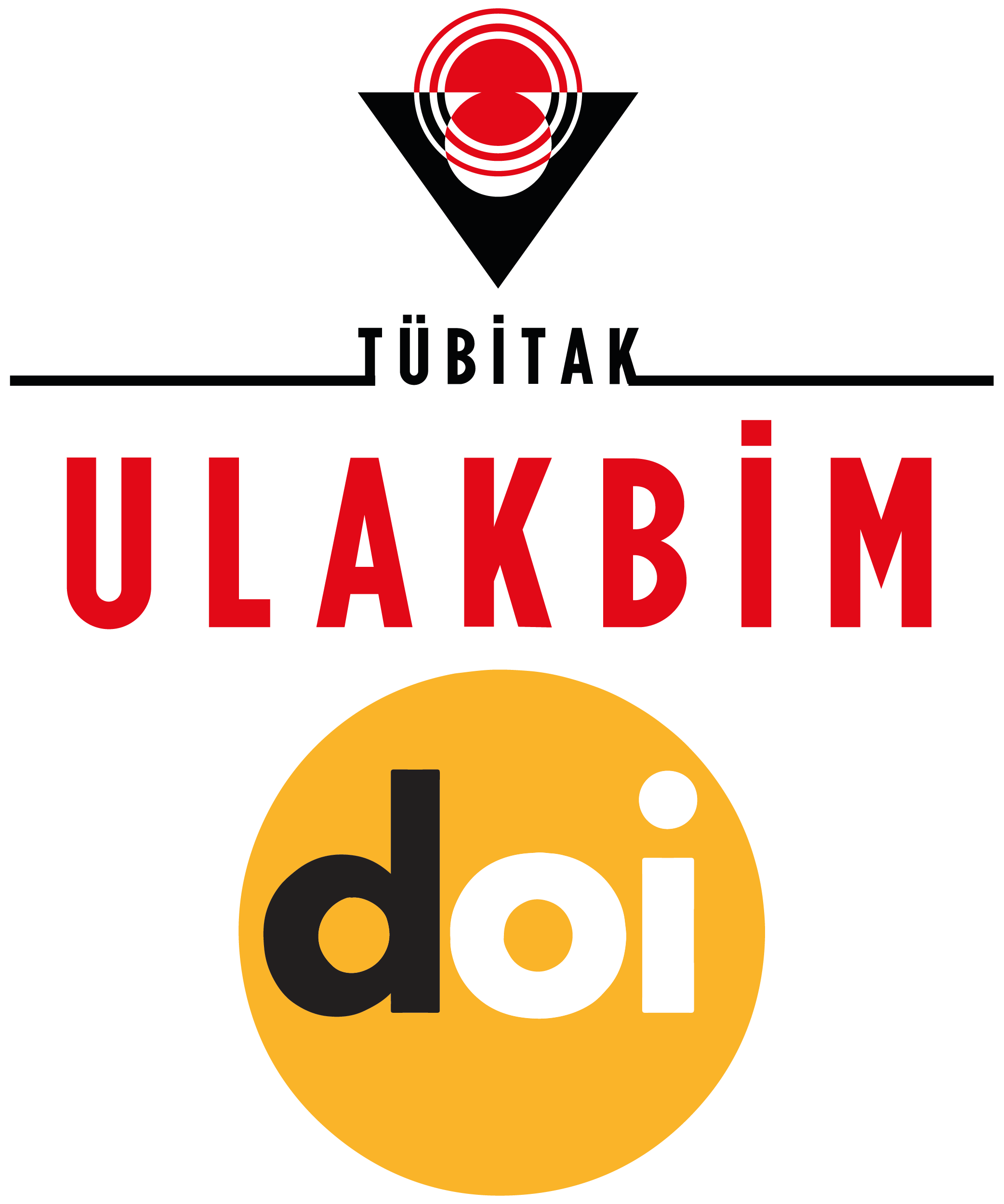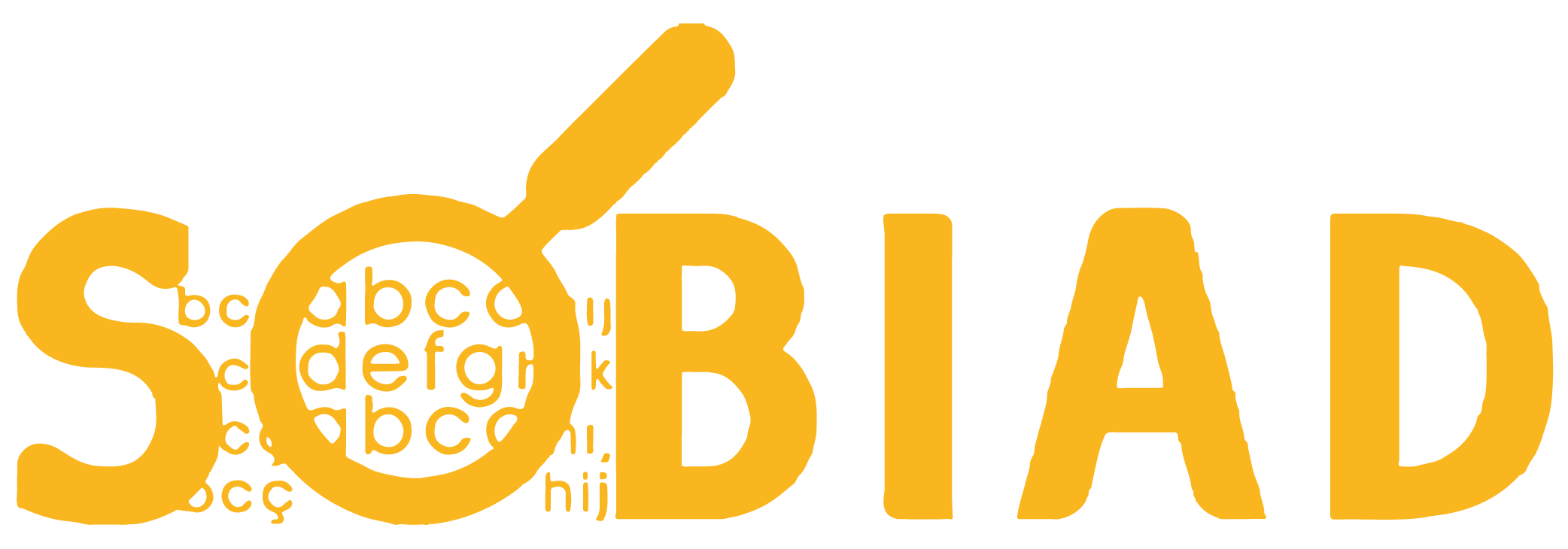Çoklu Görev ve Kariyer Uyum Yeteneklerinin Pişirme Yetkinlikleri Üzerindeki Etkisi: Aşçılık Eğitimi Alan Öğrenciler Üzerine Bir Araştırma (The Effect of Multitasking and Career Adaptability on Cooking Skills: A Study on Culinary Students)
DOI:
https://doi.org/10.21325/jotags.2023.1253Keywords:
Multitasking, Career adapt-abilities, Cooking skills, Culinary educationAbstract
The main purpose of this study is to investigate the effects of multi-tasking and career adaptability on the cooking competencies of associate and undergraduate students who will form the workforce of the sector in the coming years. In this direction, the scales whose reliability and validity were tested in previous studies in the relevant literature were compiled in accordance with the purpose and a questionnaire form was created. The created questionnaire was applied online to 482 associate degree and undergraduate students’ actively studying culinary education in higher education institutions in the current academic year using simple random sampling method. The hypotheses were tested with Partial Least- Squares Structural Equatıon Modeling (PLS-SEM). Data were analyzed in two stages, using both the measurement (external) model and the structural (internal) model. According to the findings obtained as a result of the analyzes carried out, it was determined that multitasking and concern as career adaptability had a positive and significant effect on cooking skills. As career adaptability abilities, the effects of control, curiosity and confidence levels on students' cooking skills were not determined.
References
Adler, R. F., & Benbunan-Fich, R. (2013). Self-interruptions in discretionary multitasking. Computers in Human Behavior, 29, 1441–1449. https://doi.org/10.1016/j.chb.2013.01.040
Ambiel, R. A., De Francisco Carvalho, L., Martins, G. H., & Tofoli, L. (2016). Comparing the adaptabilities of Brazilian adolescent students and adult workers. Journal of Vocational Behavior, 94, 20–27. https://doi.org/10.1016/j.jvb.2016.02.005
Araslı, H., Daşkın, M., & Saydam, S. (2014). Polychronicity and Intrinsic Motivation as Dispositional Determinants on Hotel Frontline Employees’ Job Satisfaction: Do Control Variables Make a Difference?. Procedia - Social and Behavioral Science, 109, 1395 – 1405. https://doi.org/10.1016/j.sbspro.2013.12.643
Arndt, A., Arnold, T.J., & Landry, T.D. (2006). The Effects of Polychronic-Orientation Upon Retail Employee Satisfaction and Turnover. Journal of Retailing, 82(4), 319–330. https://doi.org/10.1016/j.jretai.2006.08.005
Babarovic´, T., & Sverko, I. (2016). Vocational development in adolescence: Career construction, career decision- making difficulties and career adaptability of Croatian high school students. Primenjena Psihologija, 9, 429-448. https://doi.org/10.19090/pp.2016.4.429-448
Bluedorn, A.C., Thomas, J.K., Michael, J.S., & Gregg, D.M. (1999). Polychronicity and the Inventory of Polychronic Value (IPV): the development of an instrument to measure a fundamental dimension of organizational culture. Journal of Managerial Psychology, 14(4), 205-230. https://doi.org/10.1108/02683949910263747
Buser, T., & Peter, N. (2012). Multitasking. Experimental Economics, 15, 641–655. https://doi.org/10.1007/s10683- 012-9318-8
Caraher, M., Dixon, P., Carr-Hill, R., & Lang, T. (1999). The state of cooking in England: The relationship of cooking skills to food choice. British Food Journal, 101(8), 590–609. https://doi.org/10.1108/00070709910288289
Chin, W. W. (1998). The partial least squares for structural equation modeling. Erlbaum, Mahwah, NJ.
Chin, W. W. (2010). How to Write Up and Report PLS Analyses. In: Esposito Vinzi, V., Chin, W.W., Henseler, J. and Wang, H., Eds., Handbook of Partial Least Squares: Concepts, Methods and Applications, Springer, Heidelberg, Dordrecht, London, New York, 655-690. https://doi.org/10.1007/978-3-540-32827-8_29
Coetzee, M., & Harry, N. (2014). Emotional intelligence as a predictor of employees' career adaptability. Journal of Vocational Behavior, 84(1), 90-97. https://doi.org/10.1016/j.jvb.2013.09.001
Conte, J. M., & Gintoft, J. N. (2005). Polychronicity, big five personality dimensions, and sales performance. Human Performance, 18(4), 427-444. https://doi.org/10.1207/s15327043hup1804_8
Costa, A. I. A. (2013). Conceptualization and Measurement of Personal Norms Regarding Meal Preparation. International Journal of Consumer Studies, 37 (6), 596-604. https://doi.org/10.1111/ijcs.12036
Creed, P. A., Fallon, T., & Hood, M. (2009). The relationship between career adaptability, person and situation variables, and career concerns in young adults. Journal of Vocational Behavior, 74, 219-229. https://doi.org/10.1016/j.jvb.2008.12.004
Çakıcı, A. C., & Çiçek, M. (2022). Mesleğe Yönelik Tutumun Kariyer Niyetine Etkisi: İstanbul’da Aşçılık Eğitimi Alan Lise Öğrencileri Üzerinde Bir Araştırma. Turizm Akademik Dergisi, 9 (2), 393-410.
Daskin, M. (2015). Antecedents of Extra-Role Customer Service Behaviour: Polychronicity as a Moderator. Anatolia: An International Journal of Tourism & Hospitality Research, 26(4), 521-534. https://doi.org/10.1080/13032917.2014.996762
Davis, J. M., Lee, L. S., & Yi, M. Y. (2009). Time‐User Preference and Technology Acceptance: Measure Development of Computer Polychronicity. American Journal of Business, 24(2), 23-32. https://doi.org/10.1108/19355181200900008
Duffy, R.D. (2010). Sense of control and career adaptability among undergraduate students. Journal of Career Assessment, 18(4), 420–430. https://doi.org/10.1177/1069072710374587
Duffy, R. D., Douglass, R. P., & Autin, K. L. (2015). Career adaptability and academic satisfaction: Examining work volition and self-efficacy as mediators. Journal of Vocational Behavior, 90, 46-54. https://doi.org/10.1016/j.jvb.2015.07.007
Faul, F., Erdfelder, E., Lang, A. G., & Buchner, A. (2007). G* Power 3: A flexible statistical power analysis program for the social, behavioral, and biomedical sciences. Behavior Research Methods, 39(2), 175-191. https://doi.org/10.3758/BF03193146
Fornell, C., & Larcker, D. F. (1981). Evaluating structural equation models with unobservable and measurement error. Journal of Marketing Research, 18(1), 39-50. https://doi.org/10.2307/3151312
Gao, N., Long, C. X., & Xu, L. C. (2016). Collective Leadership, Career Concern and the Housing Market in China: The Role of Standing Committees. Review of Development Economics, 20(1), 1-13. https://doi.org/10.1111/rode.12202
Ginevra, M. C., Magnano, P., Lodi, E., Annovazzi, C., Camussi, E., Patrizi, P., & Nota, L. (2018). The role of career adaptability and courage on life satisfaction in adolescence. Journal of Adolescence, 62, 1-8. https://doi.org/10.1016/j.adolescence.2017.11.002
Guan, Y., Deng, H., Sun, J., Wang, Y., Cai, Z., Ye, L., & Li, Y. (2013). Career Adaptability, Job Search Self-Efficacy and Outcomes: A Three-Wave İnvestigation Among Chinese University Graduates. Journal of Vocational Behavior, 83(3), 561-570. https://doi.org/10.1016/j.jvb.2013.09.003
Hair, J. F., Anderson, R. E., Tatham, R. L., & Black, W. C. (1995). Multivariate Data Analysis. Macmillan, New York.
Hair, J. F., Anderson, R. E., Tatham, R. L., & Black, W. C. (1998). Multivariate Data Analysis. Prentice-Hall, Upper Saddle River, NJ.
Hair, J. F., Black, W. C., Babin, B., & Anderson, R. E. (2010). Multivariate Data Analysis, Prentice-Hall, 7th Edition, Upper Saddle River, NJ.
Hair, J. F., Ringle, C. M., & Sarstedt, M. (2011). PLS-SEM: Indeed a silver bullet. Journal of Marketing theory and Practice, 19(2), 139–152. https://doi.org/10.2753/MTP1069-6679190202
Hair, J. F., Hult, G. T. M., Ringle, C., & Sarstedt, M. (2013). A primer on partial least squares structural equation modeling (PLS-SEM). Sage publications, Thousand Oaks, CA.
Hair, J.F., Black, W.C., Babin, B.J., & Anderson, R.E. (2014). Multivariate Data Analysis. Pearson, 7th Edition, London.
Hair, J. F., Hult, G. T. M., Ringle, C., & Sarstedt, M. (2017). A primer on partial least squares structural equation modeling (PLS-SEM). Sage publications, 2nd Edition, Thousand Oaks, CA.
Hair, J. F., Matthews, L. M., Matthews, R. L., & Sarstedt, M. (2017). PLS-SEM or CB-SEM: Updated guidelines on which method to use. International Journal Multivariate Data Analysis, 1(2), 107-123. https://doi.org/10.1504/IJMDA.2017.087624
Hamtiaux, A., Houssemand, C., & Vrignaud, P. (2013). Individual and Career Adaptability: Comparing Models and Measures. Journal of Vocational Behavior, 83(2), 130-141. https://doi.org/10.1016/j.jvb.2013.03.006
Hartmann, C., Dohle, S., & Siegrist, M. (2013). Importance of cooking skills for balanced food choices. Appetite, 65, 125–131. https://doi.org/10.1016/j.appet.2013.01.016
Hecht, T. D., & Allen, N. J. (2005). Exploring links between polychronicity and well-being from the perspective of person–job fit: Does it matter if you prefer to do only one thing at a time?. Organizational Behavior and Human Decision Processes, 98, 155–178. https://doi.org/10.1016/j.obhdp.2005.07.004
Henseler, J., Ringle, C. M., & Sinkovics, R. R. (2009). The Use of Partial Least Squares Path Modeling in International Marketing. Advances in International Marketing, 20, 277-319. https://doi.org/10.1108/S1474- 7979(2009)0000020014
Henseler, J., Hubona, G., & Ray, P. A. (2016). Using PLS path modeling in new technology research: updated guidelines. Industrial Management & Data Systems, 116(1), 2–20. https://doi.org/10.1108/IMDS-09-2015-0382
Hirschi, A. (2009). Career adaptability development in adolescence: Multiple predictors and effect sense of power and life satisfaction. Journal of Vocational Behavior, 74(2), 145-155. https://doi.org/10.1016/j.jvb.2009.01.002
Hodgetts, H. M., & Jones, D. M. (2006). Contextual cues aid recovery from interruption: The role of associative activation. Journal of Experimental Psychology: Learning, Memory, and Cognition, 32(5), 1120–1132. https://doi.org/10.1037/0278-7393.32.5.1120
Hofstede, G. (1980). Culture's Consequences: International Differences in Work-Related Values. Sage Publications.
Hou, Z., Leung, S.A., Li, X., Li, X., & Xu, H. (2012). Career Adapt-Abilities Scale—China Form: Construction and initial validation. Journal of Vocational Behavior, 80(3), 686-691. https://doi.org/10.1016/j.jvb.2012.01.006
Jang, J., & George, R. T. (2012). Understanding the Influence of Polychronicity on Job Satisfaction and Turnover Intention: A Study of Non-Supervisory Hotel Employees. International Journal of Hospitality Management, 31, 588– 595. https://doi.org/10.1016/j.ijhm.2011.08.004
Jansen, K. J., & Kristof-Brown, A. L. (2005). Marching to the beat of a different drummer: Examining the impact of pacing congruence. Organizational Behavior and Human Decision Processes, 97, 93–105. https://doi.org/10.1016/j.obhdp.2005.03.005
Jez, V. (2011). Searching For the Meaning of Multitasking. NOKOBIT, University of Tromsø, Tromsø.
Jiang, Y., & Kim, Y. (2015). Developing multi-dimensional green value: Extending Social Exchange Theory to explore customers’ purchase intention in green hotels–evidence from Korea. International Journal of Contemporary Hospitality Management, 27(2), 308-334. https://doi.org/10.1108/IJCHM-08-2013-0383
Junco, R., & Cotton, S. R. (2011). Perceived Academic Effects of Instant Messaging Use. Computers & Education
(2), 370–378. https://doi.org/10.1016/j.compedu.2010.08.020
Kantrowitz, T.M., Grelle, D.M., Beaty, J.C., & Wolf, M.B. (2012). Time is money: Polychronicity as a predictor of performance across job levels. Human Performance, 25, 114–137. https://doi.org/10.1080/08959285.2012.658926
Karacan-Özdemir, N. (2019). Associations between career adaptability and career decision-making difficulties among Turkish high school students. International Journal for Educational and Vocational Guidance, 19, 475– 495. https://doi.org/10.1007/s10775-019-09389-0
Karacan-Özdemir, N., & Yerin Güneri, O. (2017). The factors contribute to career adaptability of high school students. Eurasian Journal of Educational Research, 67, 183–198. http://dx.doi.org/10.14689/ejer.2017.67.11
Karasar, N. (2012). Bilimsel Araştırma Yöntemleri. Nobel Yayınları, Ankara.
Karatepe, O. M., Aboramadan, M., & Dahleez, K. A. (2020). Does climate for creativity mediate the impact of servant leadership on management innovation and innovative behavior in the hotel industry?. International Journal of Contemporary Hospitality Management, 32, 2497–2517. https://doi.org/10.1108/IJCHM-03-2020-0219
Karatepe, O. M., Karadas, G., Azar, A. K., & Naderiadib, N. (2013). Does work engagement mediate the effect of polychronicity on performance outcomes? A study in the hospitality industry in Northern Cyprus. Journal of Human Resources in Hospitality and Tourism, 12, 52 – 70. https://doi.org/10.1080/15332845.2013.723266
Kırdök, O., & Bölükbaşı, A. (2018). The role of senior university students’ career adaptability in predicting their subjective well-being. Journal of Education and Training Studies, 6(5), 47–54. https://doi.org/10.11114/jets.v6i5.3010
Kirchberg, D. M., Roe, R. A., & Eerde, W. V. (2015). Polychronicity and multitasking: a diary study at work. Human Performance, 28(2), 112– 136. https://doi.org/10.1080/08959285.2014.976706
Koen, J., Klehe, U. C., & Van Vianen ,A. E. M. (2012). Training career adaptability to facilitate a successful school- to-work transition. Journal of Vocational Behavior, 81, 395-408. https://doi.org/10.1016/j.jvb.2012.10.003
Kong, H., Cheung, C., & Song, H. (2012). Determinants and Outcome of Career Competencies: Perspectives Of Hotel Managers in China. International Journal of Hospitality Management, 31(3), 712-719. https://doi.org/10.1016/j.ijhm.2011.09.007
Konstam, V., Celen-Demirtas, S., Tomek, S., & Sweeney, K. (2015). Career adaptability and subjective well-being in unemployed emerging adults: A promising and cautionary tale. Journal of Career Development, 42, 463–477. https://doi.org/10.1177/0894845315575151
Kozak, M. A., & Yetgin, D. (2013). Profesyonel Turist Rehberlerinin (PTR) Yetkinliklerinin Mesleki Yeterlilikler Çerçevesinde Değerlendirilmesi. 14. Ulusal Turizm Kongresi, Aralık 5-8, 408-428.
Kurnaz, A., Kurnaz, H. A., & Kılıç, B. (2014). Ön lisans Düzeyinde Eğitim Alan Aşçılık Programı Öğrencilerinin Mesleki Tutumlarının Belirlenmesi. Muğla Sıtkı Koçman Üniversitesi Sosyal Bilimler Enstitüsü Dergisi, 32, 41- 61.
Lavelle, F., McGowan, L., Hollywood, L., Surgenor, D., McCloat, A., Mooney, E., & Dean, M. (2017). The Development and Validation of Measures to Assess Cooking Skills and Food Skills. International Journal of Behavioral Nutrition, 14,118. https://doi.org/10.1186/s12966-017-0575-y
Lu, T., & Adler, H. (2009). Career goals and expectations of hospitality and tourism students in China. Journal of Teaching in Travel & Tourism, 9 (2), 63-80. https://doi.org/10.1080/15313220903041972
Madjar, N., & Oldham, G. R. (2006). Task rotation and polychronicity: Effects on individuals creativity. Human Performance, 19, 117–131. https://doi.org/10.1207/s15327043hup1902_2
Maggiori, C., Johnston, C. S., Krings, F., Massoudi, K., & Rossier, J. (2013). The Role of Career Adaptability and Work Conditions on General and Professional Well-Being. Journal of Vocational Behavior, 83(3), 437-449. https://doi.org/10.1016/j.jvb.2013.07.001
Neureiter, M., & Traut-Mattausch, E. (2017). Two sides of the career resources coin: Career adaptability resources and the impostor phenomenon. Journal of Vocational Behavior, 98, 56–69. https://doi.org/10.1016/j.jvb.2016.10.002
Oğan, Y. (2022). Üniversite Öğrencilerinin İş Hayatına Hazır Bulunma Düzeyi: Aşçılık Programı Üzerine Bir Araştırma. AHBVÜ Turizm Fakültesi Dergisi, 25 (1), 1-18.
Öztemel, K., & Akyol, E. Y. (2021). From Adaptive Readiness to Adaptation Results: Implementation of Student Career Construction Inventory and Testing the Career Construction Model of Adaptation. Journal of Career Assessment, 29(1), 54–75. https://doi.org/10.1177/1069072720930664
Pashler, H. (2000). Task switching and multitask performance. MIT Press, Cambridge, MA.
Persing, D. L. (1999). Managing in polychronic times: Exploring individual creativity and performance in intellectually intensive venues. Journal of Managerial Psychology, 14, 358–373. https://doi.org/10.1108/02683949910277111
Pouyaud, J., Vignoli, E., Dosnon, O., & Lallemand, N. (2012). Career adapt-abilities scale France form: Psychometric properties and relationships to anxiety and motivation. Journal of Vocational Behaviour, 80, 692–697. https://doi.org/10.1016/j.jvb.2012.01.021
Rocha, M., & Guimaraes, M. I. (2012). Adaptation and psychometric properties of the student career construction inventory for a portuguese sample: Formative and reflective constructs. Psychological Reports, 111(3), 845–869. https://doi.org/10.2466/03.10.11.PR0.111.6.845-869
Sanderson, K. R., Bruk-Lee, V., Viswesvaran, C., Gutierrez, S., & Kantrowitz, T. (2013). Multitasking: Do preference and ability interact to predict performance at work?. Journal of Occupational & Organizational Psychology, 86, 556–563.
Santilli, S., Marcionetti, J., Rochat, S., Rossier, J., & Nota, L. (2017). Career adaptability, hope, optimism, and life satisfaction in Italian and Swiss Adolescents. Journal of Career Development, 44(1), 1-15. https://doi.org/10.1177/0894845316633793
Sarsıkoğlu, A .F., & Bacanlı, F. (2019). An Examination of the Relationships between Career Barriers and Career Adaptability of University Students. International Journal of Turkish Educational Studies, 7(13), 95-113. https://doi.org/10.46778/goputeb.563461
Sarstedt, M., & Mooi, E. A. (2014). A concise guide to market research: The process, data, and methods using IBM SPSS statistics, Heidelberg, Springer.
Sarstedt, M., Ringle, C. M., & Hair, J. F. (2017). Partial Least Squares Structural Equation Modeling. Springer International Publishing.
Savickas, M. L. (1997). Career adaptability: An integrative construct for life-span, life-space theory. The Career Development Quarterly, 45, 247–259. https://doi.org/10.1002/j.2161-0045.1997.tb00469.x
Savickas, M. L. (2005). The theory and practice of career construction, Hoboken, NJ, Wiley.
Savickas, M. L. (2009). Career studies as self-making and life designing. Career Research & Development, 24, 15– 17. https://doi.org/10.20856/jnicec.2305
Savickas, M. L. (2012). Life design: A paradigm for career intervention in the 21st century. Journal of Counseling & Development, 90, 13–19. https://doi.org/10.1111/j.1556-6676.2012.00002.x
Savickas, M. L. (2013). Career construction theory and practice, Hoboken, NJ, Wiley.
Savickas, M. L., & Porfeli, E. (2012). Career Adapt-Abilities Scale-USA Form: Psychometric properties and relation to vocational identity. Journal of Vocational Behavior, 80, 748–753. https://doi.org/10.1016/j.jvb.2012.01.009
Shmueli, G., Sarstedt, M., Hair, J. F., Cheah, J., Ting, H., Vaithilingam, S., & Ringle, C. M. (2019). Predictive model assessment in PLS-SEM: guidelines for using PLSpredict. European Journal of Marketing, 53(11), 2322-2347. https://doi.org/10.1108/EJM-02-2019-0189
Siyez, M. D., & Mutlu Çaykuş, T. (2020). Yaşam Boyu Kariyer Gelişimi, Pegem Akademi Yayıncılık, Ankara.
Slocombe, T. E., & Bluedorn, A. C. (1999). Organizational behavior implications of the congruence between preferred polychronicity and experienced work-unit polychronicity. Journal of Organizational Behavior, 20(1), 75–99. https://doi.org/10.1002/(SICI)1099-1379(199901)20:1%3C75::AID-JOB872%3E3.0.CO;2-F
Soresi, S., Nota, L., & Ferrari, L. (2012). Career Adapt-Abilities Scale-Italian Form: Psychometric properties and relationships to breadth of interests, quality of life, and perceived barriers. Journal of Vocational Behavior, 80(3), 705–711. https://doi.org/10.1016/j.jvb.2012.01.020
Spink, A., Cole, C., & Waller, M. (2008). Multitasking Behavior. Annual Review of Information Science and Technology, 42 (1), 93-118. https://doi.org/10.1002/aris.2008.1440420110
Suh, E., West, J., & Shin, J. (2012). Important Competency Requirements for Managers in the Hospitality Industry. Journal of Hospitality, Leisure, Sport and Tourism Education, 11, 101–112. https://doi.org/10.1016/j.jhlste.2012.02.005
Şahin, T., & Arman, A. (2014). Analyzing the reasons to choose culinary training in associate degree level. Akademik Bakış Uluslararası Hakemli Sosyal Bilimler Dergisi, 41, 1-12.
Tabachnick, B. G., & Fidell, L. S. (2007). Using Multivariate Statistics. Allyn & Bacon/Pearson Education, Boston, MA, USA.
Ternier, S. (2010). Understanding and Measuring Cooking Skills and Knowledge As Factors Influencing Conveince Food Purchases and Consumption. Studies by Undergraduate Researchers at Guelph, 3(2), 69-76. https://doi.org/10.21083/surg.v3i2.1122
Tolentino, L. R., Garcia, P. R. J. M., Lu, V. N., Restubo, S. L. D., Bordia, P., & Plewa, C. (2014). Career adaptation: The relation of adaptability to goal orientation, proactive personality, and career optimism. Journal of Vocational Behavior, 84, 39-48. https://doi.org/10.1016/j.jvb.2013.11.004
Tuna, M. (2007). Employee Turnover Analysis: A Case Study in Rated-hotel Operations in Ankara. Anatolia: Journal of Tourism Research, 18 (1), 45–52.
Twaissi, N. M., Alhawtmeh, O. M., & Al-Laymoun, O. H. (2022). Polychronicity, job performance, and work engagement: The mediating role of supervisor’s organizational embodiment and moderation of psychological ownership. Cogent Business & Management, 9(1), 2143012. https://doi.org/10.1080/23311975.2022.2143012
Wang, Y.F. (2013). Constructing career competency model of hospitality industry employees for career success. International Journal of Contemporary Hospitality Management, 25 (7), 994- 1016. https://doi.org/10.1108/IJCHM-07-2012-0106
Wilkinson, T. (2011). The Law and Using Your Mobile Phone While Driving. https://news.jardinemotors.co.uk/how- to/no-penalty-points. [Erişim Tarihi: 11/09/2022].
Yeşiltaş, M., & Akdağ, G., Çeken, H., Gürlek, M. (2014). Kariyer Uyum Yetenekleri Turizm Sektörüne Bağlılığı Etkiler mi? Lisans Düzeyinde Turizm Eğitimi Alan Öğrencilere Yönelik Bir Uygulama. 15. Ulusal Turizm Kongresi, Kasım 13-16, Ankara.
Yılmaz, H., & Çemrek, F. (2019). Aşçılık Programı ile Gastronomi Bölümünde Okuyan Kadın Öğrencilerin Aşçılık Mesleğine Yönelik Tutumları: Afyon Kocatepe Üniversitesi Örneği. Journal of Gastronomy Hospitality and Travel, 2(2), 141- 156.
Yousefi, Z., Abedi, M., Baghban, I., Eatemadi, O., Abedi, A. (2011). Personal and situational variables, and career concerns: Predicting career adaptability in young adults. The Spanish Journal of Psychology, 14(1), 263-271. https://doi.org/10.5209/rev_SJOP.2011.v14.n1.23
Yücel, İ., & Polat, M. (2015). Career Adapt-Abilities Scale (CAAS) - Turkey Form Psychometric Properties and Construct Validity. International Journal of Economics, Commerce and Management, 3(5), 67-74.
Downloads
Published
How to Cite
Issue
Section
License
Copyright (c) 2023 Journal of Tourism & Gastronomy Studies

This work is licensed under a Creative Commons Attribution-NonCommercial 4.0 International License.








